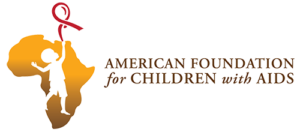One of the coolest success stories in the 25-year history of HIV/AIDS is the dramatic price drop of baseline antiretroviral drugs (ARV therapy, or ART) since the turn of the 21st century. These drugs are pivotal in the fight against AIDS, granting a healthy and productive life to HIV patients who adhere faithfully to a strict therapy regimen. And these drugs’ new affordability on the international market has allowed a 16-fold increase in the number of poor-country citizens receiving ARV drugs from 2003 to 2010 alone. At the end of 2010, 6.6 million people in the developing world were benefiting from them. 47% of the world’s citizens had access to ART; by now, that proportion is over half.
Here’s how the price decrease happened. In a nutshell, a combination of activism and generic drug production loosened the patent-protected monopolies surrounding the first kinds of antiretroviral medication ever developed, thereby breaking down the control that pharmaceutical companies had over their sale. In 1994, the World Trade Organization’s Agreement on Trade-Related Aspects of Property Rights (TRIPS) prohibited the production or sale of antiretroviral drugs except by the large pharmaceutical companies that developed them. This meant that treatment for AIDS, priced at $10,000-15,000, was prohibitively expensive in developing countries. Fewer than 2% of the HIV+ population in these countries acquired ART. In 2000, despite these regulations, Brazil began producing generic versions of the protected drugs, selling them at a fifth of the brand price. The same year, an Indian company, Cipla, followed suit, pricing their drugs at a mere $350 per person per year by early 2001. The competition from the generic producers angered the pharmaceutical companies but forcefully drove down the price of brand-name ARV to match Cipla’s price. Throughout the early 2000s, the downward price trend continued—now, basic, first-line ARV is available for $160-200 per person per year, and to this day, India supplies 80% of donor-funded ARV. Generic drugs are very much responsible for the expansion of treatment access around the developing world, especially in sub-Saharan Africa, where the AFCA works.
The entrance of generic drugs into the ARV market coincided with a lot of advocacy work, putting political pressure on pharmaceutical companies to loosen their hold on their monopolies. For example, the Clinton Foundation formed after President Clinton exited office, and it has lobbied for the availability of generic AIDS drugs ever since. Furthermore, in 2001, the international community reacted indignantly when 39 major pharmaceutical companies attempted to sue the South African government for passing a law that would facilitate the production and importation of generic ARVs. After several global petitions were drawn up against them, these companies were forced to back down. Though activists’ efforts have never formally changed TRIPS’ patent protection rules, they did produce a 2001 WTO resolution called the Doha Round Agreement, which declared that TRIPS would be interpreted with the intended goal of global expanding treatment access. The pharmaceutical companies have been semi-compliant; in 2006, UNITAID, an organization which funds ARV distribution and lobbies for further price reductions, began operations with moderate success. These steps represent progress and provide hope that one day ARV’s may be available to all who need them.
Today’s legal and economic picture of ARV access is still far from ideal. Much more activism is needed to dissolve the monopolies on the more effective second-line ARV medication. More information on the challenges of expanding access to come in the next few days! A more detailed account of the story of the ARV market is available at http://www.avert.org/generic.htm. In the meantime, find out how you can get directly involved and make a concrete difference by exploring our website!

